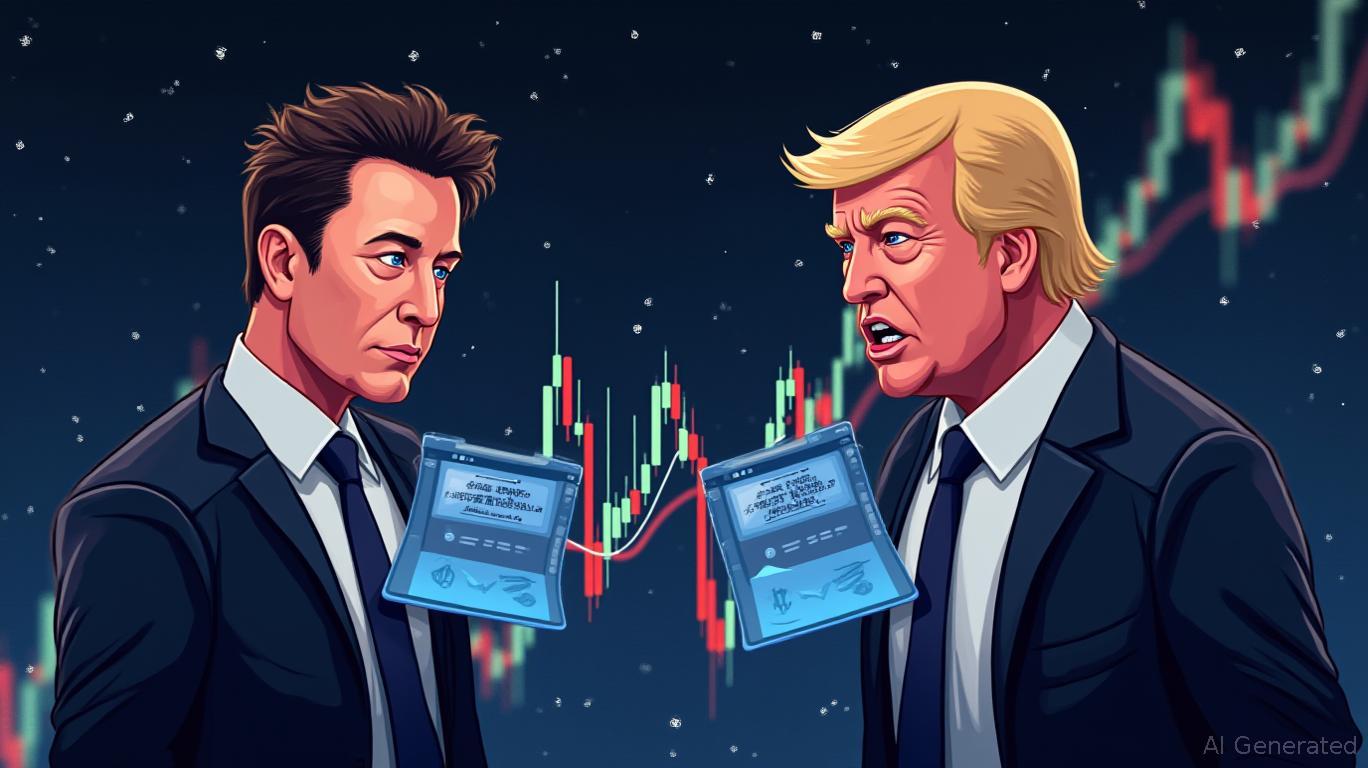The Volatility Playbook: Navigating Personality-Driven Markets in the Musk-Trump Aftermath

The public feud between Elon Musk and Donald Trump in 2025 has laid bare the fragility of a financial system increasingly reliant on personality-driven investments. From Dogecoin's 12% collapse during their Twitter spats to Tesla's 9% stock plunge amid threatened contract cancellations, the fallout underscores a critical truth: when high-profile figures become de facto market-moving entities, volatility isn't just a risk—it's the baseline. For investors, this era demands a new playbook to assess both the opportunities and systemic vulnerabilities embedded in meme-centric financial products.
Structural Vulnerabilities: The Risks of Personality-Driven Markets
The Musk-Trump feud has exposed three critical weak points in today's markets:
- Regulatory Black Holes
The U.S. regulatory framework remains ill-equipped to handle meme-driven assets. The Digital Asset Market Clarity Act, debated in 2025, risks creating loopholes allowing issuers to bypass SEC oversight, as highlighted by Amanda Fischer of Better Markets. Meanwhile, crypto exchanges like ByBit face repeated hacks, underscoring cybersecurity gaps. For investors, this means heightened exposure to scams, market manipulation, and sudden regulatory crackdowns.
Political Entanglement
Musk's $38 billion in government contracts and Trump's memecoin dinners (allegedly tied to legal favors) illustrate how personal ambition can destabilize markets. The SEC's “crypto task force” is scrambling to address conflicts of interest, but enforcement lags behind the chaos. A Tesla investor, for example, faces dual risks: political fallout from Musk's alliances and the whims of retail traders chasing viral trends.Herd-Mentality Bubbles
The 90% collapse of Haliey Welch's HAWK token in 2024 exemplifies how meme-driven assets can crater overnight. Retail investors, often drawn by FOMO rather than fundamentals, fuel these swings. As Reddit's r/CryptoMoonShots and X threads amplify noise over signal, the line between opportunity and trap grows razor-thin.
Opportunities in the Chaos: Where to Find Value
Despite the risks, the meme market's volatility creates niches for savvy investors:
AI-Driven Memecoins
Tokens like Fartcoin ($900M market cap) and Bully (BULLY) blend humor with utility (e.g., NFT minting, staking). These projects leverage AI to engage communities and adapt to trends, offering long-tail potential. Early adopters who identify tokens with real-world use cases—like Dogecoin's adoption in African remittances—can profit from brand loyalty.Regulatory Arbitrage
The SEC's delayed framework creates a window for investors to back projects compliant with emerging standards. For instance, memecoins like Trump's TRUMP, which initially soared to $70 before crashing 65%, could rebound if regulators enforce transparency around issuer incentives.Institutional Onramps
The rise of memecoin ETFs and partnerships (e.g., TRUMP's branded merchandise) signals institutional validation. Investors should prioritize tokens with clear governance structures and partnerships, such as Dogecoin's ties to charities, over pure speculation plays.
Investment Strategies for the Personality-Driven Era
To thrive in this environment, adopt these principles:
Dollar-Cost Average (DCA) with a Twist
Avoid lump-sum investments in meme stocks or coins. Instead, DCA into sectors with structural growth (e.g., AI-driven memecoins) while setting strict stop-loss limits. For example, allocate 5% of a portfolio to Dogecoin, rebalancing monthly.Leverage Technical Analysis
Use tools like RSI and MACD to identify overbought/oversold conditions. During the Musk-Trump clash, Tesla's RSI dipped below 看不出 30 twice, signaling buy opportunities.
During the Musk-Trump feud, when a MACD Golden Cross occurred, a disciplined strategy of holding Tesla for 20 trading days delivered an impressive 148% return, far exceeding the benchmark's 9%. While this strategy offered a strong risk-adjusted return (Sharpe ratio of 2.76), it also faced a maximum drawdown of 21%, highlighting the importance of stop-loss mechanisms in volatile markets.
Stay Ahead of Regulatory Shifts
Monitor the Digital Asset Market Clarity Act and SEC actions. If the bill passes with anti-loophole amendments, expect a “regulatory rally” for compliant projects. Conversely, a failure to address cybersecurity could trigger a sector-wide sell-off.Diversify Beyond the “Meme”
Pair meme-centric bets with traditional hedges. For every 1 part exposure to memecoins, hold 2 parts in low-volatility ETFs (e.g., SPDR S&P 500 ETF) and 1 part in gold.
Conclusion: The New Market Realities
The Musk-Trump fallout is a dress rehearsal for the future of investing. As personalities and platforms increasingly dictate market moves, success hinges on three pillars:
- Discipline to avoid emotional trades driven by social media frenzy,
- Due diligence to separate sustainable projects (e.g., AI-backed utility tokens) from pump-and-dump schemes,
- Adaptability to regulatory shifts and geopolitical spats.
For now, the meme market's “Wild West” phase offers asymmetric opportunities—but only for those willing to treat it as a high-stakes experiment, not a retirement plan.
Final Advice: Allocate no more than 5–10% of a portfolio to meme-centric assets, and prioritize tokens with real-world utility over pure hype.

Comments
No comments yet